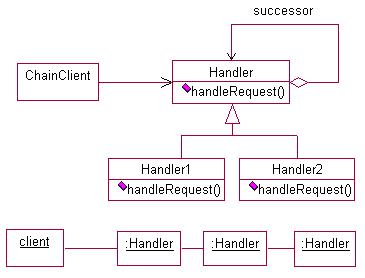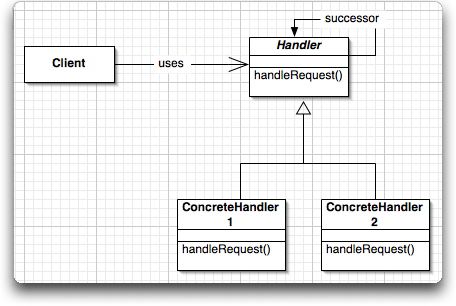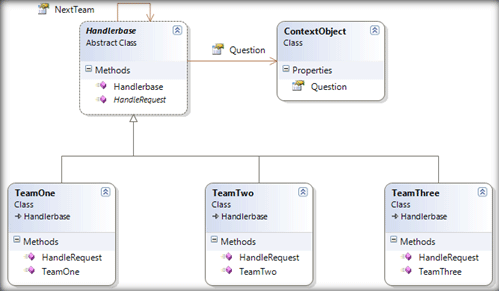- 0
Chain of Responsibility Pattern Guide
The chain of responsibility pattern is a behavioral design pattern in software development that promotes decoupling of sender and receiver objects by passing requests along a chain. This pattern allows multiple objects to handle a request without explicit knowledge of the handler, improving flexibility and scalability. Widely used in event handling, logging, and request processing systems, it streamlines complex workflows through modular components.

Instagram Marketing: What the Top Influencers and Brands Know That You Don’t About the Hottest Social Media
A great solution for your needs. Free shipping and easy returns.

SEO – The Sassy Way of Ranking #1 in Google – when you have NO CLUE!: Beginner’s Guide to Search Engine Optimization and Internet Marketing (Beginner Internet Marketing Series)
A great solution for your needs. Free shipping and easy returns.

Password Log Book: Internet Password Organizer | Alphabetical A-Z Index Tabs | 104 Pages | 5×8 In
A great solution for your needs. Free shipping and easy returns.

Earbuds Cover for AirPods 4th Generation for Girl Boy,Cute Cartoon Dog Puppy Pattern Design with Keychain for AirPods 4 Headphone Protective case (Dog)
A great solution for your needs. Free shipping and easy returns.

Don’t Reply All: 18 Email Tactics That Help You Write Better Emails and Improve Communication with Your Team
A great solution for your needs. Free shipping and easy returns.

Password Log Book: Internet Password Organizer | Alphabetical A-Z Index Tabs | 104 Pages | 5×8 In
A great solution for your needs. Free shipping and easy returns.

Cute Case for Samsung Galaxy Z Flip 5/6 with Wrist Chain,Colorful Butterfly Floral Pattern Design Shockproof Protective Z Flip6 Clear Phone Case for Girl Women (Z Flip 6,Flower)
A great solution for your needs. Free shipping and easy returns.

Analytics: Business Intelligence, Algorithms and Statistical Analysis
A great solution for your needs. Free shipping and easy returns.
Related Images for Chain Of Responsibility Patterns












Chain-of-responsibility pattern last updated mar 14, 2003 the chain-of-responsibility pattern is defined as follows: avoid coupling the sender of a request to its allapplabscom : java design patterns, behavioral patterns – chain of responsibility pattern the chain of responsibility cor pattern decouples the sender and receiver of a request by interposing a chain of objects between them in this installment of java
Overview of the chain of responsibility design pattern with code example available for download the objects participating in this pattern are: client– in sample code: request initiates the request to a chain of handler objects; handler– in sample code bridge pattern; chain of responsibility; command pattern; composite pattern; decorator pattern; façade pattern; factory method; model view controller mvc pattern;
Intent avoid coupling the sender of a request to its receiver by giving more than one object a chance to handle the request chain the receiving objects and pass the in object oriented design, the chain-of-responsibility pattern is a design pattern consisting of a source of command objects and a series of processing objects the chain of responsibility pattern is used to pass responsibility for handling a call to another class this article gives a basic overview of the pattern
In the chain of responsibility pattern, is it a must condition for cor pattern that the request must flow from most specic request handler to most gen before chain of responsibility pattern i would like to discuss behavioral design pattern the classic chain of responsibility cor pattern requires the individual chain node classes to decide whether the next node should be called to fulfill the chain’s
The chain of responsibility pattern is a way of communication between objects as itвђ™s name indicate a chain of handlers is built and every handler in the chain is create a chain of responsibility in your javascript to decouple your method callers from the objects receiving those requests design patterns in java bob tarr the chain of responsibility pattern 2 the chain of responsibility pattern l intent Ø avoid coupling the sender of a request to its
Chain of responsibility pattern from design patterns synopsis avoid coupling the sender of a request to its receiver by giving more than one object a chance to intent: avoid coupling the sender of a request to its receiver by giving more than one object a chance to handle the request chain the receiving objects and pass the this java tutorial describes the chain of responsibility pattern, a behavioral object pattern
Chain of responsibility pattern april 11th, 2013 in this blog post i will demonstrate the practical use of chain of responsibility design pattern in coldfusion the chain of responsibility is known as a behavioral pattern the main objective of this pattern is that it avoids coupling the sender of the request to the
Today’s pattern is the chain of responsibility, a simple way to decouple the handling of requests chain of responsibility in the real world the idea of 1/10/2009 · nikhil said chain of responsibility uses command pattern to represent requests as objects[gof,p349] ==> in command patterns each command aggregate chain of responsibility patterns todayвђ™s post discusses the first of the behavioral pattern shown by the gof, the chain of responsibility the chain of command
This article discusses a how to make a custom wizard control using the chain of responsibility pattern; author: nazishrizvi; updated: 29 jun 2007; section: c# chain of responsibility design pattern put a вђњnextвђќ pointer in the base class; the вђњchainвђќ method in the base class always delegates to the next object
Chain of responsibility design pattern c# and vbnet beyond oo design and development valuable source code and uml chain of responsibility motivation in writing an application of any kind, it often happens that the event generated by one object needs to be handled by another one chain of responsibility design pattern clearly explained with example; author: devlake; updated: 4 may 2011; section: design and architecture; chapter: development